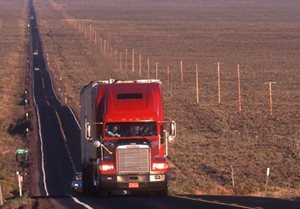I wanted to become educated on freight brokering a few years ago so I would no longer be at a disadvantage when negotiating with brokers in my business. I obtained freight broker training and learned what had been hidden behind the other side of the transportation curtain. This was money well spent in educating myself on an area I knew little about. I even worked for an independent agent for a large broker/carrier for awhile and learned even more.
Arming yourself with knowledge about certain regions, freight lanes, commodities, etc is the best way to succeed as an independent owner-operator. DAT has a great site and if you follow this link, you will find helpful information on van, reefer and flatbed rates nationwide and you'll be able to focus on various regions as well. I recommend that you study it for awhile and then you will start seeing the trends and understanding why flatbed rates are higher in the southeast vs.the southwest for instance. Demand drives the rates and there isn't a high demand for lumber carrying flatbeds in the desert of Tucson as there is in the thick hardwood forests of Virginia.
I hear drivers bragging about going into the northeast for $3.50 a mile, but they will not tell you they come back at $1.00 a mile or empty. If you want to just run brokered freight and not service your own customers, you need to find two or three strong lanes with high demand for outbound at each end. Truckstop.com has a load density program that shows the number of inbound and outbound loads for each state based on type of trailer. This is what drives freight rates and the brokers have this information as well. At the time of this writing, there are 1760 dry van loads coming to Florida, but there are only 334 loads coming out. Do you think those outbound loads will pay $2.50 a mile? Not a chance, they will be some of the lowest rates you've ever seen. If you go into a  dead end state like Florida, make sure your rate is high enough to compensate for the deadhead out.
dead end state like Florida, make sure your rate is high enough to compensate for the deadhead out.
With the exception of a hot spot market, dealing with brokers is the same thing as getting wholesale rates for your services instead of retail rates if you have your own customers. Brokers will take at least 15%-20% off the top so keep that in mind. However, dealing with brokers gives the owner-operator more flexibility as they're not required to move that shipper's freight every week. When dealing with brokers, make sure that you have the upper hand at all times. Your truck needs to be in an area that has high demand for it instead of an area where several hundred trucks are waiting on a few loads.